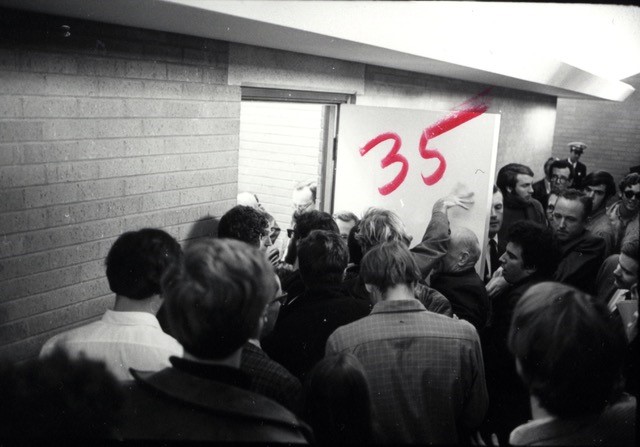I’ve just read the report of the Task Force on the History of Jewish Admissions at Stanford. As a successful undergraduate applicant from western Los Angeles in the mid-1960s, here’s what I remember.
Like the people — such as Robin Kennedy and Mark Mancall — cited in the report, as a college-bound student at Culver City High School in the early 1960s, I learned of Stanford’s reputed “Jewish quota,” probably from my high-school counselor. I don’t recall any specific number. It was just that there appeared to be a smaller share of Jewish undergraduates at Stanford than at UC Berkeley, Stanford’s athletic rival. Stanford’s emphasis on non-academic admissions criteria, such as athletics and other student activities, coincidentally discriminated against Jewish students, who I thought were more academically focused. Stanford’s evaluation of “personal,” non-academic qualities is discussed starting page 26 of the Task Force report. But there seemed to be more.
From my experience, Southern California’s Jewish community was largely assimilated. I knew of no young people who wore traditional Jewish garb or payess (sideburns). We shared the beaches and played sports with our primarily white gentile friends. We partied and dated non-Jewish kids. I did, however, give up my last year of Little League baseball to prepare for my Bar Mitzvah.
In my senior high school year, I was already admitted to the University of California to take a calculus class at UCLA. With UC as a back-up, the only school I applied to was Stanford. By the 1960s, Stanford combined a strong liberal arts education with science and engineering, professional schools and a nationally visible athletic program. It was the place to go to establish personal relationships with others who could open doors for a lifetime of business, political or cultural success.
My high school counselor made it clear what I had to do — beyond grades, test scores and advanced math programs — to get in. I earned three varsity letters as one of the weakest members of Culver’s tennis team, and joined clubs. I was active politically in the civil rights movement, but I don’t recall that I emphasized that in my application. Superficially, at least, I was the well-rounded applicant that Stanford was looking for.
At least three of us from Culver were accepted into Stanford in the fall of 1966: Myself, a Jewish girl and our league’s top athlete in football and baseball — not Jewish.
Why do I think that Stanford’s powers-that-be feared having too many Jews on campus, particularly Jews who easily mixed in with other white students? To some degree it was persistent prejudice, prejudice targeted against many minority groups (in those days, Jews were considered a minority). It wasn’t because Stanford administrators believed that Jews controlled and manipulated the world economy. They knew better, recruiting and admitting the sons and daughters of the American ruling class.
I believe it was because they believed that Jewish radicals would threaten the status quo. Jews had long been among the leaders and foot-soldiers of left-wing movements throughout Europe and the United States. Many of the leaders and other activists in Berkeley’s 1964-65 Free Speech Movement, including my own sister, were Jewish. The people who ran Stanford did not want to see a repeat of the rebellion already happening at the larger university across the Bay.
While I do believe that Stanford discriminated against Jews in admissions well into the 1960s, we activists came to believe that academic success in high school should not have been the only criterion for welcoming undergraduates to Stanford. Many bright and potentially successful Black and Brown students did not qualify for Stanford academically because they did not have the opportunities that white and some Asian students had, but if admitted and provided with support they too were Stanford material. So we fought along with Stanford’s few students of color, starting with demonstrations following the 1968 murder of Martin Luther King Jr., for Stanford to broaden its admissions criteria and target financial aid to those communities.
Stanford’s fear that Jews would upend the status quo turned out to be dead-on. I observed, then and now, that Jews played a disproportionate role in the upheaval that characterized the late 60s and early 70s at Stanford. For example, the 1969 Public Broadcasting Laboratories documentary on Stanford SDS, Fathers and Sons, featured four undergraduate leaders, three of whom were Jewish — one of whom was me. Administrators, alumni and parents worried that Jewish students would turn upper-class WASP undergraduates against their parents and their class. And we did!
Lenny Siegel (’70) is the author of DISTURBING THE WAR: The Inside Story of the Movement to Get Stanford University out of Southeast Asia – 1965–1975 (see http://a3mreunion.org/index.html) and served as mayor of Mountain View in 2018.
